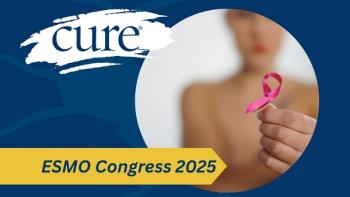
Zero shades of gray: Who's to blame for lack of brain cancer awareness?
As of 2013, nearly 700,000 Americans are living with a primary brain tumor. One of those 700,000 ... is me.Unfortunately for us, brain and central nervous system (CNS) cancers make up just one percent of all cancers in this country. That translates into not only a lack of awareness, but also a lack of understanding. Most colleagues and new friends are shocked when they learn I'm a survivor. "But you look so....normal" is a popular refrain.What they don't understand is, I work hard at that normal. We all do. And I'm lucky.Brain cancer symptoms are directly linked to the area in the brain where the tumor is located. As the tumor grows, it presses on the surrounding brain tissue, which in turn affects the functions controlled by that specific area of the brain. Side effects can be as diverse as headaches, changes in our personalities, difficulty walking, issues with reading and writing, loss of vision, mood swings, incontinence and seizures. Our symptoms run the gamut, and impact all parts of our bodies, because in the end, the brain controls everything. And the symbol of our fight? A gray ribbon. To be fair, we aren't the best advocates for our disease. Of the 700,000 of us living with brain tumors every single day, most of us are having a really hard time just walking, talking and remembering, let alone possessing the energy and wherewithal to serve as hopeful, media-friendly ambassadors of this deadly disease.Using the hashtag #BTSM (brain tumor social media) allows the brain tumor community on Twitter to share what they experience when they learn of their brain cancer diagnosis, and everything that comes after. But the sad fact is that ordinary people don't think about brain tumors. Ever. There is no high-profile 'awareness' movement for our deadly cancer, and the general public has no idea regarding the signs and symptoms of our disease."No one thinks about brain tumors until you or a loved one has one," tweeted @everydayleft.So who CAN we blame for this lack of public awareness? I blame the smart aleck who christened the first gray ribbon for the cause.Ha, ha. I get it. Gray, for "gray matter." The brain has gray matter. Clever.Except that, the color gray does not stand out. At all. Doesn't grab attention or motivate activism. It's the poor man's pink. And we deserve so much better. When I participate in brain tumor advocacy, and faithfully pin the gray ribbon to my shirt, it's virtually indistinguishable.Can you imagine Kitchen Aid selling a $350.00 Artisan Series stand mixer for our cause? Delta Airlines inspiring research dollars for painting an airbus gray? An NFL referee drawing attention to the disease by dropping a gray flag? Because I can't. Even brain tumor nonprofits don't even bother asking us to wear gray during fundraising walks and events.It's not fair to blame a color. But we can blame ourselves. A rebranding is in order here, and now is the time to do it. More so than any other cancer, brain tumors have life-altering psychological, cognitive, behavioral and physical effects. In the last several decades, only four FDA-approved treatments have been made available. Four. This is outrageous, given that brain and CNS cancers are also the most expensive diseases to treat in this country. This makes us worth the medical research dollars and this country's attention. It's time to harness that attention into action. Because our gray is getting us nowhere. Liz Salmi blogs about living with brain cancer at





